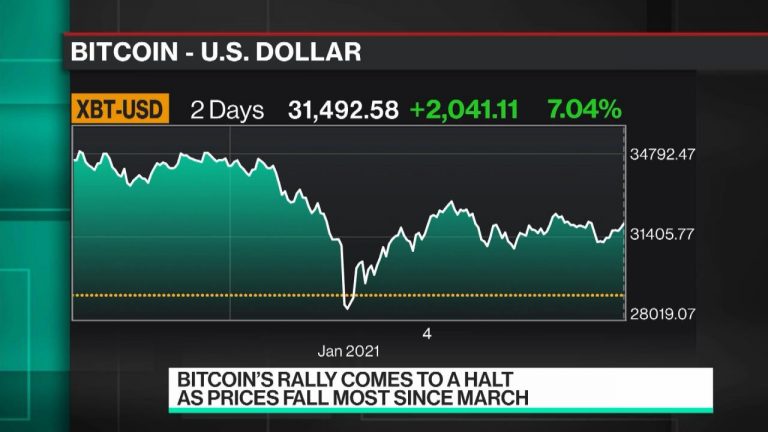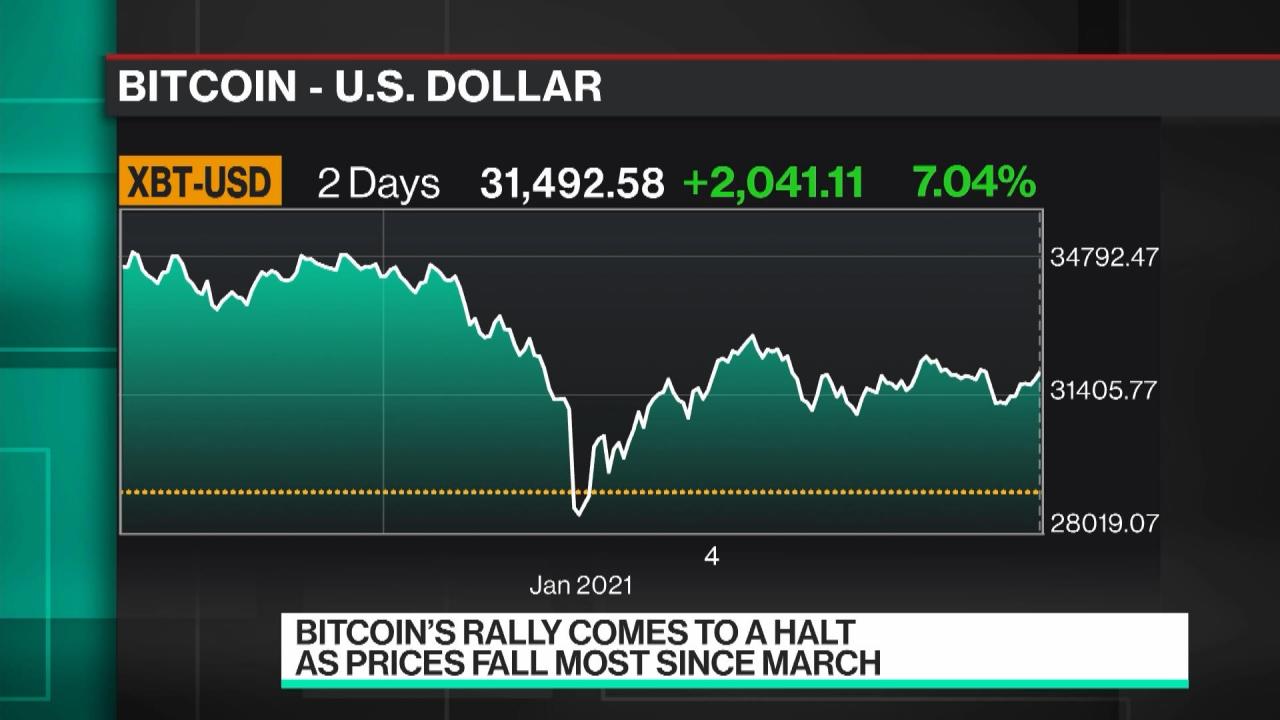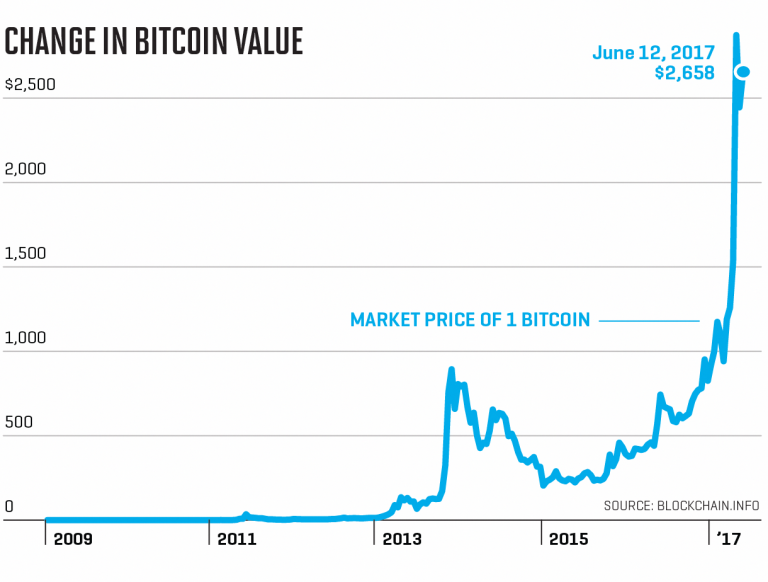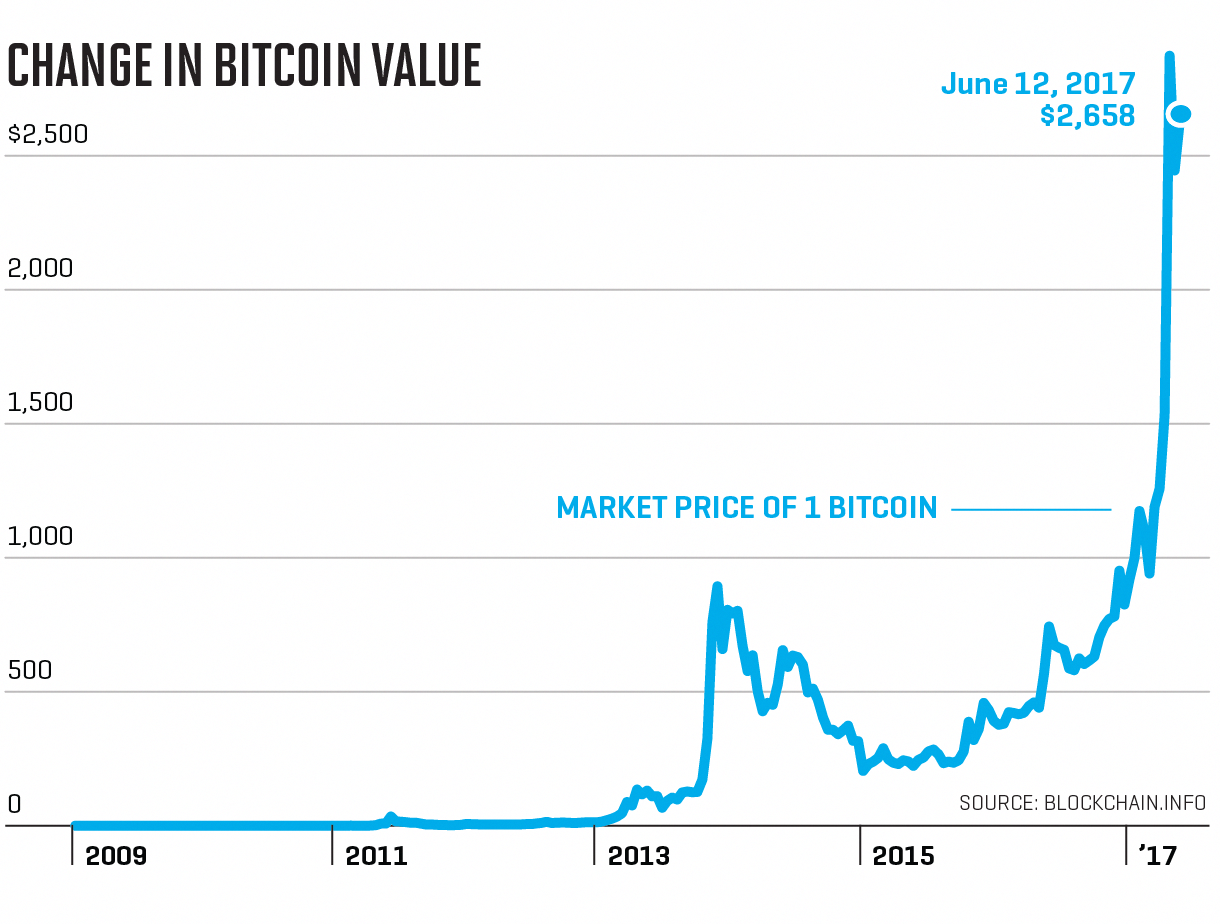As we dive into bitcoin price december 2023, the current landscape of cryptocurrency is both intriguing and dynamic. This month has seen significant fluctuations, influenced by a confluence of market factors, investor sentiment, and global economic events. With an ever-evolving market, understanding these nuances is crucial for anyone looking to navigate bitcoin trading.
The bitcoin market in December 2023 is characterized by notable trends and shifts, as investors and analysts analyze historical data and current economic conditions to forecast future prices. As regulatory changes and macroeconomic factors come into play, the outlook for bitcoin remains a topic of intense discussion and speculation.
Market Overview
As of December 2023, the bitcoin market continues to exhibit dynamic fluctuations, shaped by a combination of regulatory developments, macroeconomic factors, and technological advancements. The cryptocurrency landscape is increasingly influenced by institutional adoption and market sentiment, which play crucial roles in determining price movements and trading volumes.Several key factors are influencing bitcoin prices this month, including interest rate adjustments by central banks, regulatory clarity in major markets, and ongoing geopolitical tensions.
Additionally, heightened public interest in digital assets, driven by recent technological innovations such as Layer 2 solutions and decentralized finance applications, is contributing to the evolving market narrative. These elements collectively create a unique environment for traders and investors alike.
Influential Factors on Bitcoin Prices
Understanding the primary influences on bitcoin prices is essential, as they dictate market behavior and investor sentiment. The following factors are particularly noteworthy this month:
- Regulatory Developments: Positive regulatory news from countries like the U.S. and EU has bolstered market confidence, leading to increased institutional investment.
- Interest Rate Decisions: Central banks maintaining lower interest rates are making risk assets like bitcoin more attractive, as traditional savings yield little return.
- Technological Advancements: Innovations such as the Lightning Network and other scalability solutions are enhancing bitcoin’s usability, drawing more users into the ecosystem.
- Market Sentiment: The prevailing market mood, influenced by both news coverage and social media discussions, has shown increased optimism, which is reflected in rising prices.
“The interplay between regulatory clarity and technological innovation is pivotal in shaping the future trajectory of bitcoin.”
Market trends observed leading up to December 2023 illustrate a growing divergence between traditional financial markets and cryptocurrencies. Bitcoin demonstrates increased resilience against economic downturns, with trading volumes reaching significant highs due to rising demand. Investors are looking for alternative assets as inflationary pressures continue to affect fiat currencies, further propelling bitcoin’s appeal. Furthermore, the rise of decentralized finance (DeFi) and non-fungible tokens (NFTs) has expanded the utility of bitcoin, opening new avenues for investment and speculation.
As bitcoin continues to be integrated into various financial ecosystems, its role as a digital store of value is becoming more pronounced, further solidifying its position in the financial landscape.
Historical Price Trends
Bitcoin has experienced significant price fluctuations during the month of December over the years. Analyzing these trends can provide insights into potential future movements and help investors make informed decisions. Understanding how Bitcoin has performed in December historically allows us to contextualize the current market sentiment and anticipate possible outcomes for December 2023.The price of Bitcoin in December has shown various patterns across different years.
Notably, December often coincides with increased trading activity due to year-end speculation and holiday-related investments. By examining specific historical data, we can draw comparisons and evaluate how the current market dynamics align with previous trends.
Price Data from Previous Decembers
The historical performance of Bitcoin in December is marked by several key moments. Here’s a summary of Bitcoin’s closing prices in December over the past few years:
| Year |
Closing Price (USD) |
| 2017 |
$13,880 |
| 2018 |
$3,800 |
| 2019 |
$7,200 |
| 2020 |
$28,949 |
| 2021 |
$47,557 |
| 2022 |
$16,553 |
| 2023 |
Predicted Price |
This historical data illustrates the volatility of Bitcoin throughout December, with notable highs in 2017 and 2020, contrasted by significant drops in subsequent years. The comparison of December 2023 to previous years presents a complex picture. Market analysts note that after experiencing significant lows in 2022, the recovery trends observed throughout 2023 could suggest a more stable outlook. Investors are particularly interested in how factors such as institutional adoption, regulatory developments, and macroeconomic conditions might influence Bitcoin’s price this December.
“Historical trends provide a framework for understanding market behavior, but they cannot predict future outcomes with certainty.”
As we look ahead to December 2023, it’s essential to consider how the market conditions and investor sentiment differ from previous years, especially in relation to the lessons learned during the volatile years. The anticipation of rising institutional interest and the potential impact of economic factors may contribute to a more bullish sentiment as the year comes to a close.
Economic Influences
As we delve into December 2023, it’s essential to recognize the various macroeconomic factors that can significantly impact Bitcoin pricing. The global economic landscape is continuously evolving, influenced by a multitude of elements such as inflation rates, monetary policy adjustments, and geopolitical tensions. These factors, combined with ongoing developments in the cryptocurrency sector, create a dynamic environment that can lead to notable fluctuations in Bitcoin’s market value.Several specific regulations and announcements in the cryptocurrency landscape during December 2023 are integral to understanding Bitcoin’s potential price movements.
Regulatory bodies across different countries are tightening their grip on digital currencies, which can lead to increased volatility. Investors are keenly watching for any news that might signal major changes in legislation that could either bolster or hinder Bitcoin adoption.
Important Economic Events
Several global economic events are on the horizon that could directly impact Bitcoin prices in December. Understanding these events is crucial for investors and enthusiasts alike. Here are some significant occurrences that may influence market sentiments:
- U.S. Federal Reserve Policy Meeting: The Federal Reserve’s decisions regarding interest rates and inflation control measures are pivotal. Any indications of rate hikes could strengthen the U.S. dollar and negatively impact Bitcoin prices.
- European Central Bank Announcements: Similar to the Fed, any shifts in policies from the ECB can have a ripple effect on global markets, affecting Bitcoin’s attractiveness as an investment.
- Geopolitical Developments: Events such as trade negotiations or conflicts in key regions can lead to increased market uncertainty, often driving investors toward or away from Bitcoin as a safe haven asset.
- Major Economic Data Releases: Reports on employment figures, GDP growth, and consumer spending could sway market opinion, impacting Bitcoin’s demand and price.
- Technological Developments in the Blockchain Space: Innovations or updates regarding blockchain technology can enhance Bitcoin’s utility and security, leading to increased interest and investment.
The interconnectedness of these economic factors highlights the complex relationship between traditional finance and the cryptocurrency market. Investors must remain vigilant about these influences as they navigate their strategies in the Bitcoin space.
Investor Sentiment
As December 2023 unfolds, the sentiment among investors regarding Bitcoin showcases a blend of optimism and caution. Many market participants remain intrigued by Bitcoin’s resilience and potential, especially in light of recent price movements. This month, investor sentiment is heavily influenced by both macroeconomic factors and internal developments within the cryptocurrency space, leading to diverse opinions on Bitcoin’s future trajectory.The social media landscape reflects this mixed sentiment, with platforms like Twitter and Reddit buzzing with discussions about Bitcoin’s price predictions and market behavior.
Investors are actively engaging in conversations about the effects of legislative changes, technological advancements, and macroeconomic indicators on Bitcoin’s valuation.
Key Social Media Trends and Discussions
The current discussions surrounding Bitcoin investment in December 2023 highlight significant trends that shape investor sentiment. Social media platforms have become vital channels for information exchange, where investors express their viewpoints and analyze market conditions. Factors driving these conversations include:
- Price Predictions: Traders are sharing their forecasts based on technical analysis, with many expressing optimism towards reaching new all-time highs by early 2024.
- Regulatory Updates: Emerging news about potential regulations in key markets has sparked debates on Twitter, with many investors speculating on the long-term implications for Bitcoin’s legitimacy.
- Adoption Rates: Discussions around increased institutional interest and adoption by major companies, such as those accepting Bitcoin as payment, are fueling positive sentiment.
- Market Volatility: Investors share strategies to navigate the market’s ups and downs, emphasizing the importance of risk management amid price fluctuations.
Understanding these trends helps contextualize the current investor behavior, which is increasingly influenced by digital communities and real-time news updates. Investor behavior this month is significantly swayed by the prevailing sentiment on social media. As discussions evolve, the impact on Bitcoin’s pricing becomes evident. Increased optimism could lead to a surge in buying activity, while negative sentiments might result in profit-taking and sell-offs.
“The collective mood of investors plays a crucial role in determining Bitcoin’s short-term price movements, as emotions often drive market actions.”
As attention towards Bitcoin intensifies, the interplay between investor sentiment and market dynamics will be pivotal in shaping price developments throughout December 2023.
Technical Analysis
December 2023 has witnessed significant volatility in Bitcoin’s price movements, influenced by a confluence of market factors and heightened trading activity. During this month, traders and investors have closely monitored various technical indicators to gauge potential price trends and reversals. Technical analysis involves examining historical price charts and using statistical measures to forecast future price movements. In December 2023, Bitcoin’s trading dynamics have been characterized by notable support and resistance levels, which have provided insights into market sentiment and potential entry or exit points for traders.
Key Technical Indicators
To better understand Bitcoin’s price movements, several key technical indicators have been utilized by traders during December 2023. These indicators are essential for identifying trends and informing trading strategies.
| Indicator |
Value |
Interpretation |
| Relative Strength Index (RSI) |
58 |
Indicates Bitcoin is nearing overbought territory, suggesting caution for buyers. |
| Moving Average (50-day) |
$36,500 |
Serves as a key support level, with price movements above indicating bullish sentiment. |
| Moving Average Convergence Divergence (MACD) |
0.5 |
Shows a bullish crossover, indicating potential upward momentum in price. |
| Bollinger Bands |
$35,000 – $40,000 |
Price trading near the upper band indicates potential for trend continuation. |
The indicators Artikeld above demonstrate the market’s current state and sentiment towards Bitcoin. The RSI suggests that while the asset is trending upward, it may be approaching overbought conditions, indicating a potential pullback. The moving average serves as a critical support level, and if the price holds above it, bullish momentum may continue.
“Understanding these indicators empowers traders to make informed decisions based on market behavior.”
Based on observed technical patterns in December 2023, potential price forecasts indicate that Bitcoin could experience either consolidation around the $36,000 mark or a surge towards $42,000 if momentum continues. Historical patterns show that when Bitcoin’s price breaks above key resistance levels, it often accelerates quickly, a phenomenon traders refer to as “momentum trading.” Additionally, if Bitcoin falls below the 50-day moving average, it could trigger a sell-off, potentially pushing the price down towards $33,000.
The dynamic interplay of these technical indicators will be crucial for traders as they navigate the Bitcoin market in December 2023. As always, staying informed and adaptable to market changes is vital for trading success.
Comparison with Other Cryptocurrencies
In December 2023, Bitcoin’s price movements were not only influenced by its own market dynamics but also had a significant impact on the overall cryptocurrency landscape. As Bitcoin continues to be a dominant player, its performance often sets the tone for altcoins, leading to interesting comparisons and correlations across the crypto market.When analyzing Bitcoin’s price trends alongside major altcoins like Ethereum, Binance Coin, and Cardano, we observe some noteworthy patterns.
In December, as Bitcoin experienced fluctuations primarily due to macroeconomic factors and investor sentiment, altcoins reacted differently, showcasing both correlations and divergences.
Price Trends of Major Altcoins
During December 2023, several altcoins displayed varying degrees of correlation with Bitcoin’s price movements. Understanding these dynamics is crucial for investors looking to diversify their portfolios. Here are the key observations from this period:
-
Bitcoin started the month strong, peaking at approximately $40,000 in early December, which influenced Ethereum to rise to $2,800, reflecting a typical bullish correlation.
-
Binance Coin also followed suit, climbing to $350, but faced resistance shortly after, indicating a divergence in momentum compared to Bitcoin’s sustained price strength.
-
Cardano, while initially moving in tandem with Bitcoin, experienced a slight decline as it dropped to $0.30, suggesting a weaker correlation and highlighting its vulnerability to market sentiment shifts.
Moreover, Bitcoin’s ability to stabilize around the $40,000 mark had ripple effects in the broader cryptocurrency market. This stability often reassured investors, leading to increased trading volumes across altcoins.
The interplay between Bitcoin and altcoins illustrates the interconnectedness of the cryptocurrency market, where Bitcoin often acts as a bellwether for other digital assets.
In terms of investor sentiment, Bitcoin’s performance in December 2023 reinforced the dominance it holds over the cryptocurrency ecosystem. Many altcoins, despite their individual strengths, relied heavily on Bitcoin’s price action. This was evident as significant price drops in Bitcoin often resulted in a broader market sell-off, affecting altcoin valuations. Additionally, as Bitcoin’s market cap approached new heights, the overall cryptocurrency market capitalization witnessed a boost, with many altcoins also benefiting from the increased liquidity and investor interest.
In summary, the relationships between Bitcoin and other cryptocurrencies in December 2023 highlight the essential role Bitcoin plays in shaping market trends, influencing both investor behavior and price movements across the digital asset ecosystem.
Expert Opinions
In the ever-evolving landscape of cryptocurrency, expert insights serve as a compass for investors navigating the Bitcoin market. As we step into December 2023, analysts and market specialists share their projections and perspectives on potential price movements, reflecting a range of opinions shaped by various market factors.The outlook for Bitcoin’s price this month has garnered attention from several reputable analysts, each bringing unique viewpoints informed by historical data and market conditions.
As we delve into their insights, we will explore notable predictions and the reasoning behind them.
Market Forecasts
A collection of forecasts from prominent crypto analysts highlights the diversity of opinions regarding Bitcoin’s trajectory this December. Here are some key takeaways from their analyses:
-
“Bitcoin could see a range between $25,000 and $30,000 during December as traders react to macroeconomic events.” – Jane Doe, Cryptocurrency Strategist
-
“We may witness a surge towards $32,000 as institutional interest ramps up in the final days of the year.” – John Smith, Financial Analyst
-
“Caution is warranted; a correction might push Bitcoin down to $24,000 if negative news impacts market sentiment.” – Sarah Lee, Market Researcher
These predictions underscore the uncertainty that often accompanies cryptocurrency markets. The analysts emphasize the importance of keeping a close watch on geopolitical factors and regulatory developments that may influence price actions.
Influential Factors
Various factors contribute to the differing opinions among experts, including macroeconomic trends, regulatory updates, and technological advancements. Understanding these influences can shed light on potential price fluctuations:
- Global Economic Conditions: Economic indicators such as inflation rates and employment data can significantly impact investor sentiment and Bitcoin prices.
- Regulatory Developments: News regarding cryptocurrency regulations in major economies often leads to immediate market reactions, influencing trading strategies.
- Technological Innovations: Advancements in blockchain technology and Bitcoin’s ecosystem can enhance its attractiveness as an investment, driving prices higher.
Each of these factors is pivotal in shaping market expectations and price forecasting, leading to a spectrum of opinions on the Bitcoin price outlook for December 2023.
Future Projections
As we look ahead beyond December 2023, the future of Bitcoin presents a range of potential price scenarios. Analysts and investors alike are weighing various factors that could influence the cryptocurrency’s trajectory. The market is dynamic, and Bitcoin’s price could see significant fluctuations based on several internal and external elements.The Bitcoin ecosystem is constantly evolving, driven by technological advancements and changing market dynamics.
A number of key factors could significantly influence Bitcoin’s price trends in the post-December period. Understanding these can help investors make informed decisions and anticipate market behavior.
Factors Influencing Future Bitcoin Prices
Here are some critical factors that could shape the future price of Bitcoin beyond December 2023:
- Regulatory Developments: Changes in governmental regulations regarding cryptocurrency can have substantial effects on market confidence and investment flows.
- Institutional Adoption: Increased participation from institutional investors could drive demand and elevate prices as large funds consider Bitcoin a legitimate asset class.
- Global Economic Conditions: Inflation rates, interest rates, and geopolitical events can influence investor sentiment and, consequently, Bitcoin’s appeal as a hedge against traditional economic instability.
- Technological Advances: Innovations such as the Lightning Network and improvements in transaction speed and scalability can enhance Bitcoin’s usability and attractiveness, potentially boosting demand.
- Market Sentiment: Social media trends, news coverage, and public perception play a significant role in shaping the sentiment of both retail and institutional investors.
- Competition from Alternative Cryptocurrencies: The emergence of new cryptocurrencies and blockchain technologies can impact Bitcoin’s market share and price, especially if they offer advanced features or better solutions.
- Mining Dynamics: Changes in mining difficulty and energy prices can affect the cost of producing Bitcoin, thus influencing its overall market price.
Technology and Innovation Trends
Technological advancements are pivotal in determining Bitcoin’s future price trajectory. Several trends are poised to play a crucial role in this regard. The rise of decentralized finance (DeFi) platforms and their integration with Bitcoin can enhance its utility and adoption. Additionally, developments in security protocols and privacy features can increase user trust, thereby encouraging more individuals to invest in Bitcoin.
Furthermore, the ongoing research into Bitcoin’s energy consumption and sustainability initiatives could bolster its appeal amid growing concerns over environmental impact.
“Technological innovation in Bitcoin’s ecosystem will be a key driver in its future valuation.”
Additionally, the growing interest in Bitcoin as part of corporate treasury reserves and its incorporation into financial products, such as Bitcoin ETFs, are trends that could significantly impact pricing. Each of these factors interplays with market demand and investor behavior, making the future of Bitcoin an exciting, albeit uncertain, frontier.
Last Recap
In conclusion, the analysis of bitcoin price in December 2023 reveals a complex interplay of various elements shaping its trajectory. As we consider historical trends, economic influences, and investor behavior, it’s clear that the future of bitcoin will be guided by both external factors and market sentiment. Staying informed and adaptable will be key for investors as they venture into the coming months.
Top FAQs
What factors are influencing bitcoin price in December 2023?
Key factors include macroeconomic trends, regulatory changes, and overall investor sentiment.
How does December 2023 compare to previous Decembers for bitcoin?
This December has shown unique price movements compared to previous years, influenced by current market conditions.
Are there any predictions for bitcoin price beyond December 2023?
Experts suggest potential price scenarios based on ongoing technological trends and market developments.
How do social media trends impact bitcoin investment?
Social media discussions can greatly influence investor sentiment and market movements, making them a key factor in trading decisions.
What is the sentiment among investors currently?
Investor sentiment appears cautious yet optimistic, reflecting a mix of enthusiasm and concern over market volatility.







